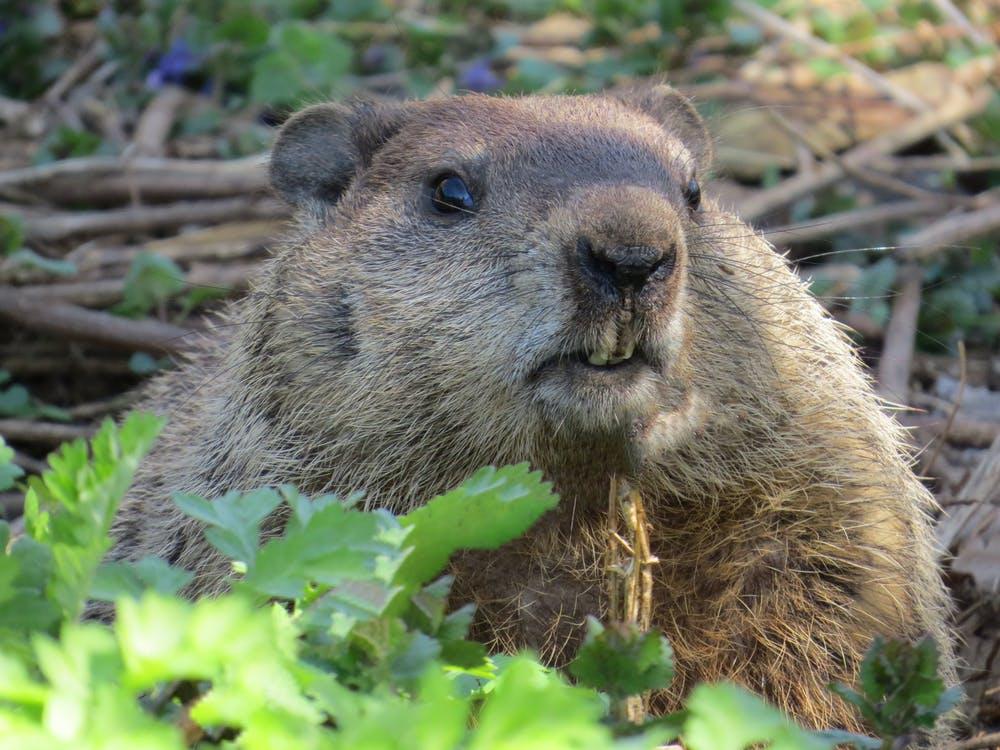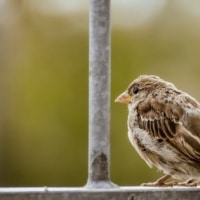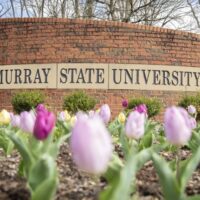In the next installment of the Land Between the Lakes Wildlife Report, Tracy Ross and Woodlands Nature Station’s lead naturalist John Pollpeter discuss the largest (and busiest) rodent of the Land Between the Lakes area: the beaver.
Beavers are the second-largest rodent in the world; the first largest is the South American capybara. “Beavers can get up to 60 pounds in this area,” Pollpeter begins. “I’ve heard some records as large as 90 pounds. That’s a big animal out here in Land Between the Lakes. It’s easy to see. They’re conspicuous.”
“A lot of times, you’ll see them swimming across the lake–maybe just their nose. The tell-tale sign that there’s a beaver around is if you get too close, they will slap that flat tail of theirs. They’re a very family-oriented animal; that [tail flap] is a warning to the rest of the family that there’s danger nearby.”

Due to their size, there aren’t many natural predators of the beaver in this area. This is also due in part to their dams and lodges. “The beavers out west that have a lot of predators usually put their lodges out in the middle of a lake like a little island,” Pollpeter explains. “The ones here do bank lodges, so you’ll see a big giant pile of sticks up against the bank. They have an underwater entrance. It’s super difficult for [predators] to break into.”
As far as their own diets are concerned, beavers “eat bark, the living part of the tree, twigs, leaves, and aquatic vegetation,” Pollpeter says. “If you’ve ever come out to Land Between the Lakes and gone to Honker Lake, you might see all these giant lily pads out there. Those lily pads and cattails out there form almost like potatoes or tubers in the mud. That’s a popular item for beavers.”
Beavers are also known for planning ahead when it comes to their favorite foods. “During the fall, before the trees start losing their leaves, they’ll actually take branches with leaves on it from the trees that they’ve felled and go to the bottom of the lake and shove those branches into the bottom of the lake. All winter long, even if that lake freezes over, they have a fresh supply of food. It’s like their own individual refrigerator.”
Ever the family-first creatures, beavers will then drag the branches they’ve stored in the mud at the bottom of the lake back to the lodge so the whole family can eat it. “A group of beavers is called a colony, and usually, it’s Mom, Dad, the kids, and a teenager who never left home,” Pollpeter laughs.
The saying ‘busy as a beaver’ isn’t just a nonsensical phrase, either. “They’re very industrious,” Pollpeter says. “They’re definitely very good at what they do, which is engineering a dam, building that lodge, and thinking ahead for the winter. When it comes to animal intelligence, that does take quite a big leap to do all of those different kinds of things.”
Beavers are constantly aware of maintaining their hard work once a dam or lodge has been built. “If you go to a beaver lodge or dam and take out some of the sticks, so it creates a little flow of water, that sound makes them go crazy. They’ll actually go repair that overnight. You can try to damage the dam, but it’s pretty impossible because the next day, they’ll be right at it.”
Pollpeter explains that beavers are considered a keystone species, which is “one individual species that impacts a lot of other species. Without that [keystone] animal being in the ecosystem, those other species may not exist or would have a difficult time surviving. There are so many species that are dependent on a beaver from creating their little wetlands to beaver ponds. Wood ducks, turtles, swans, snakes, fish, and many of the plants that grow along that stream are dependent on beavers.”
Their impact reaches far beyond the streams and lakes of LBL. Beavers are “probably one of the most impactful animals in our country,” Pollpeter says, “because of the fur trade. They used so much of the beaver pelts in Europe that it basically drew pioneers across the country. It was almost like a gold rush except for an animal. It pretty much wiped a lot of the beavers out in the western part of the United States.”
“One of the things that they’re finding out now, especially in the dry West and the fact that they’re getting fires, is when they introduce beavers back into the ecosystem, they bring up the water table. It’s making those places that may have burned or had struggled in the past do a lot better. Yellowstone is a good example of that,” he says.
Beavers were reintroduced to the Land Between the Lakes area in the 1930s. Though they might not have been completely extinct, the reintroduction supplemented the population and increased the amount of other wildlife in LBL.
“One of the best things you can do is come out here and go for a backpacking trip on Honker, Hematite, or Energy Lakes, especially in the evenings because it’s very easy to see them during that time. Walk Hematite Trail or Honker Trail…there are plenty of lodges all along both of those lakes. The entire back of Energy Lake is a giant beaver marsh, so if you get a kayak and go towards the back of it, you’ll have no problem seeing these wonderful animals,” Pollpeter concludes.
For more information on Land Between the Lakes or the Woodlands Nature Station, visit their website.






